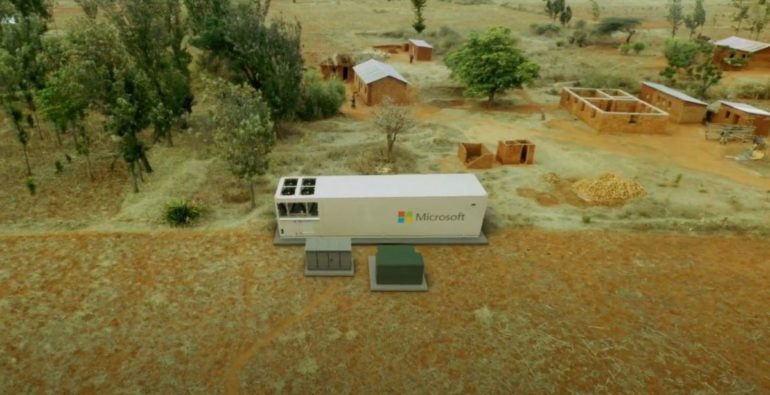Announced last fall, Azure Modular Datacenter, or MDC, is basically an Azure datacenter in a shipping container, delivered to remote locations on a truck bed. It’s running Azure Stack Hub (for now) and can run disconnected or connected via satellite. Beyond the datacenter device itself, Azure MDC is interesting for a number of reasons.
When Microsoft announced MDC last October, many readers and commentators wondered why Microsoft was taking another stab at the idea of Azure in a container. After all, Microsoft had been dabbling with Azure in shipping containers since 2008 — a couple of years after other tech companies like Sun Microsystems (with “Project Blackbox” back in 2006) had been pushing forward with the datacenter-in-a container concept.
Microsoft’s Bill Karagounis, who these days is General Manager, Azure Global Industry Sovereign Solutions, supplied the following answer to that question:
“Containerized solutions in the past required operators and were bespoke in implementation. Azure MDC adds value in that it runs an Azure OS with familiar APIs, resource management and cloud portal; very different in comparison to previous containerized solutions. Azure MDC units are already in early use with defense and private sector organizations.”
This, coupled with advances in compute and networking, heating/cooling systems and other related technologies all made the time right to go with the shipping container approach, Karagounis said. Companies in the middle of cloud migrations may want to take advantage of prefab datacenters where they can continue to run things on-prem while adding capacity. Users may be enticed by the pay-as-you-go business model offered for MDC.
“There is a rush to standup infrastructure to support 5g, smart cities and edge compute, going well beyond the content delivery network scope that previously drove ‘edge-ish’ needs and drastically improving the service experience. Quickly deployable and small footprint datacenters fill this gap nicely with the ability to run highly optimized edge scenarios with a public cloud app model when a datacenter is not available or will take a long time to setup,” Karagounis added.
There are some other related reasons I think Microsoft decided to go the container route with MDC now. And this is just me connecting dots and speculating.
Azure MDC is an edge-computing device, by definition. Microsoft has slowly and steadily been building up its stable of intelligent edge devices. Microsoft’s alleged lack of tactical edge devices — cited by AWS in its unsealed complaint about Microsoft’s JEDI win — is one of the key areas where AWS claimed it had a demonstrable leg-up over Azure.
The “tactical edge” devices that were part of the JEDI RFP are those suited for operational environments with limited communications connectivity and storage availability. These devices included both ruggedized portable devices, such as Microsoft’s Azure Stack Edge Pro PCs and modular, rapidly deployable datacenters. In October, Microsoft officials said Azure MDC units were “in early use with defense and private sector organizations.”
Then there’s this “sovereign” terminology which is part of MDC lead Karagounis’ title (and which he told me he was not at liberty to discuss). There are quite a few Microsoft job listings which mention “sovereign,” including this one, which says “Office 365 is expanding presence in Sovereign markets. Cyber-sovereignty is an emerging product area that reflects customer, and in particular government, demand for isolated and controlled cloud environments that continue to yield the manageability and feature benefits of the public cloud.”
Microsoft seems to be using the terms sovereign and “special clouds” largely interchangeably on their site. A product like Azure MDC is tailor-made for this sovereign/special cloud/government space. Right now, Azure MDC is running Microsoft’s hybrid-computing offering, Azure Stack Hub. But it sounds like that won’t always — or only — will be the case, based on information Microsoft shared with me last year. As Azure’s footprint continues to grow globally, so, too, may the installed base of Azure MDC.



